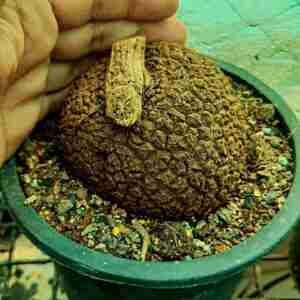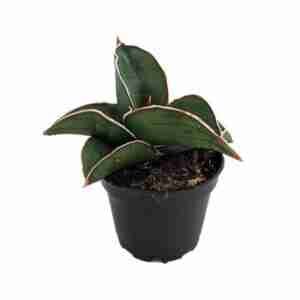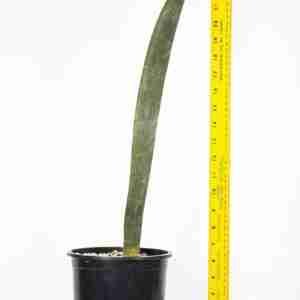Fox Tail Asparagus aka Asparagus Meyeri
The Fox Tail Asparagus aka Asparagus Meyeri (Asparagus densiflorus ‘Myers’ or Asparagus meyeri) is a unique and attractive plant known for its feathery, tail-like fronds that resemble a fox’s tail. Despite its name and appearance, it is not a true fern but rather a member of the Asparagus family.
Key Characteristics of Fox Tail Asparagus aka Asparagus Meyeri:
- Appearance: The Fox Tail Asparagus has long, arching stems densely covered with needle-like leaves that give the plant its soft, fluffy appearance. The stems grow in a distinctive upright or arching manner, forming a shape that looks like a bushy fox’s tail. The plant may also produce small, white or pale pink flowers, followed by bright red berries, though this is more common in outdoor plants.
- Size: Indoors, it typically grows to about 2-3 feet in height and width, but it can grow larger if given enough space and proper care. Outdoors, it may spread even more.
- Light Requirements: Fox Tail Asparagus aka Asparagus Meyeri prefers bright, indirect light but can tolerate some direct sunlight, especially in the morning or late afternoon. It can also adapt to lower light conditions, though its growth may be slower and less vigorous.
- Watering: The Fox Tail Asparagus likes to be kept consistently moist but not soggy. Water the plant when the top inch of soil feels dry. During the winter months, reduce watering, allowing the soil to dry out a bit more between waterings.
- Humidity: While the plant can tolerate average indoor humidity, it thrives in higher humidity levels. If the air is too dry, the plant’s foliage may turn brown at the tips. Misting the plant regularly or placing it on a humidity tray can help maintain the desired moisture level.
- Temperature: It prefers temperatures between 65-75°F (18-24°C) and should be protected from cold drafts and temperatures below 50°F (10°C). The plant can tolerate warmer temperatures as long as it’s not exposed to direct, harsh sunlight for extended periods.
- Care: The Fox Tail Asparagus is relatively low-maintenance. Pruning is not necessary but can be done to remove any yellowing or damaged fronds. The plant benefits from occasional feeding during the growing season with a balanced, water-soluble fertilizer.
Benefits:
- Aesthetic Appeal: Its unique and fluffy fronds make it a popular choice for adding texture and greenery to indoor spaces. It works well in pots, hanging baskets, or as part of a mixed planting.
- Versatility: The Fox Tail Asparagus can be used as an indoor houseplant, in outdoor gardens, or even in container arrangements, making it a versatile addition to any plant collection.
Potential Issues with Fox Tail Asparagus aka Asparagus Meyeri:
- Pests: The plant can sometimes attract common houseplant pests like spider mites, aphids, and mealybugs. Regular inspection and prompt treatment with insecticidal soap or neem oil can help keep these pests in check.
- Yellowing Fronds: Yellowing fronds can be a sign of underwatering, lack of light, or aging. Ensure the plant is getting the right amount of water and light, and remove any yellowing fronds to keep the plant looking healthy.
- Spreading Habit: Outdoors, this plant can become invasive in some regions due to its spreading habit. It’s best to keep it contained in a pot or monitor its spread carefully if planted in the ground.
Caution with Fox Tail Asparagus aka Asparagus Meyeri:
- Toxicity: The berries of the Fox Tail Asparagus are toxic if ingested and can cause gastrointestinal issues in pets and humans. The plant itself may also cause skin irritation, so it’s advisable to handle it with care and keep it out of reach of children and pets.
The Fox Tail Asparagus is an elegant and resilient plant that can thrive in a variety of conditions, making it a popular choice for both novice and experienced gardeners








Reviews
There are no reviews yet.